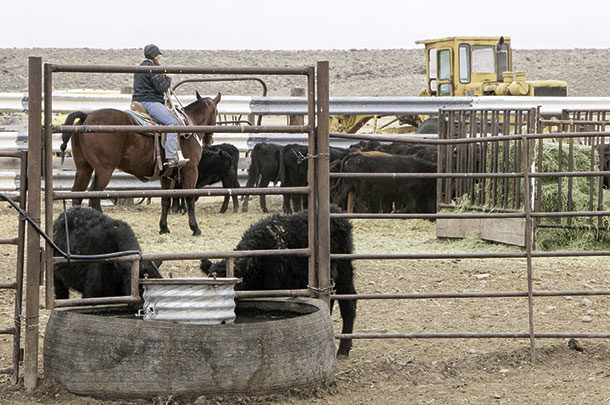What is considered high risk? It seems with today’s markets and feeding scenarios, everything is considered high risk when we talk financials. When we talk about incoming feeder cattle, high-risk terms apply to those who have high shrink, are lightweight, have never been bunk broke, are unweaned or simply come from an area where cattle are pieced together at a sale barn to make larger groups. Sounds like a lot of the cattle purchased fall into this category, huh? Many of these lighter weight cattle, however, when started correctly and kept healthy, can give some of the biggest returns due to maximizing feed conversion on lighter weight cattle, keeping your cost of gain (COG) low.
When receiving these types of cattle, it is important to make sure you have a checklist of items to be cognizant of.
- Work with a credited vet and nutritionist to process these animals and start them on feed. Each yard’s end goal with these types of cattle is different, and that will dictate how these cattle are vaccinated, implanted and started on feed.
- Provide fresh water. It’s even better if you can provide fresh water and a source of electrolytes. In some cases these cattle have come off stock dams only, so overflowing your automatic water tank may need to be done to show cattle where to drink, and don’t be surprised if they pull back when the water automatically disperses in their face, making a scary noise. If you know they came from a situation like this, it may be beneficial to put a water tank into the pen, which also allows you to add electrolytes to help with both hydration and gut fill. The top rule in cattle feeding is if they do not drink, they do not eat. This is the most important point to remember.
- Provide clean hay in the bunk. Rumen microbes are depressed during transportation. Providing a good source of hay in the feedbunk helps provide a good fiber mat in the rumen, essentially helping jump-start intakes once again. You can top dress a total mixed ration (TMR) on the hay the next day, but it is important not to blast the rumen of naive cattle with too much starch right away. This has been linked to higher pulls, in regards to respiratory and metabolic issues.
- Look at their vaccination history, but assume they have had none. Why do I say this? When commingling cattle together in high-risk situations, you must remember that no vaccination will cover 100% of the animals that receive it. Most of these cattle will benefit from two times through the chute, so as not to overwhelm their immune system when giving vaccinations one time.
- Metaphylaxis treatment may be a great idea. This means you give the whole lot an antibiotic, if recommended via your veterinarian. This helps set them up to combat any illness they may contract on arrival and with commingling and provide you coverage for items such as bovine respiratory syncytial virus (BRSV) for a longer period, while the vaccination takes hold.
- Provide support to your pen riders. It’s tedious work to keep a watchful eye on high-risk cattle. There will be more pulls and there can be higher death loss, and that all takes a toll on cattle caregivers.
- Make sure your treatment protocols are clear, so pen riders know what to expect and when to throw in the towel. Not all high-stress cattle will make it to the end goal. Discuss what an acceptable death loss is and work closely with your veterinarian when your pull rate starts to get higher than you would like.
- Have candid feedback with your nutritionist; we like to hear how the cattle are doing and may need to change their protocol based on how well they are taking to the bunk. Remember, they are coming off high dry matter feed, so stepping them up to higher levels of fermented feeds can be done over a series of 30 days effectively but shouldn’t be rushed if the calves aren’t ready.
- Implants should not be administered until cattle are up on feed. The easiest way to induce social issues (i.e., pen riding, bullers, railers, etc.) is to implant too early without the calories to back up the hormones being released. Implants should be based on the end goal and marketing type.
- Only feed fresh feed. Moldy hay, moldy silages, etc. have no place in starter rations, even when diluting them out. The rumen, liver and immune system must work together to keep the calf healthy. If the liver must detoxify molds, you can overwhelm the system, setting them up for mycosis and liver abscesses in addition to lowering the immune system and allowing secondary infections to infect the animal.
Pay attention to what the animal is telling you. High-risk cattle do not enter the feedyard looking for trouble. Stress induces many of the issues we see in high-risk cattle. Making their pen as welcoming as possible, being calm and low stress when processing, and paying attention when working them (i.e. don’t be on your cell phone when looking for pulls or making feed calls) will help reduce the amount of pulls in those pens. Working with your veterinarian and your nutritionist and having direct communication with both will help keep you on top of any potential issues.
Feeding high-risk cattle can be a challenge, but can also be rewarding, both personally and financially. Finding personnel who are considerate of the needs of these cattle, both nutritional and health wise, and ensuring a welcoming environment will help improve chances of turning a profit.












